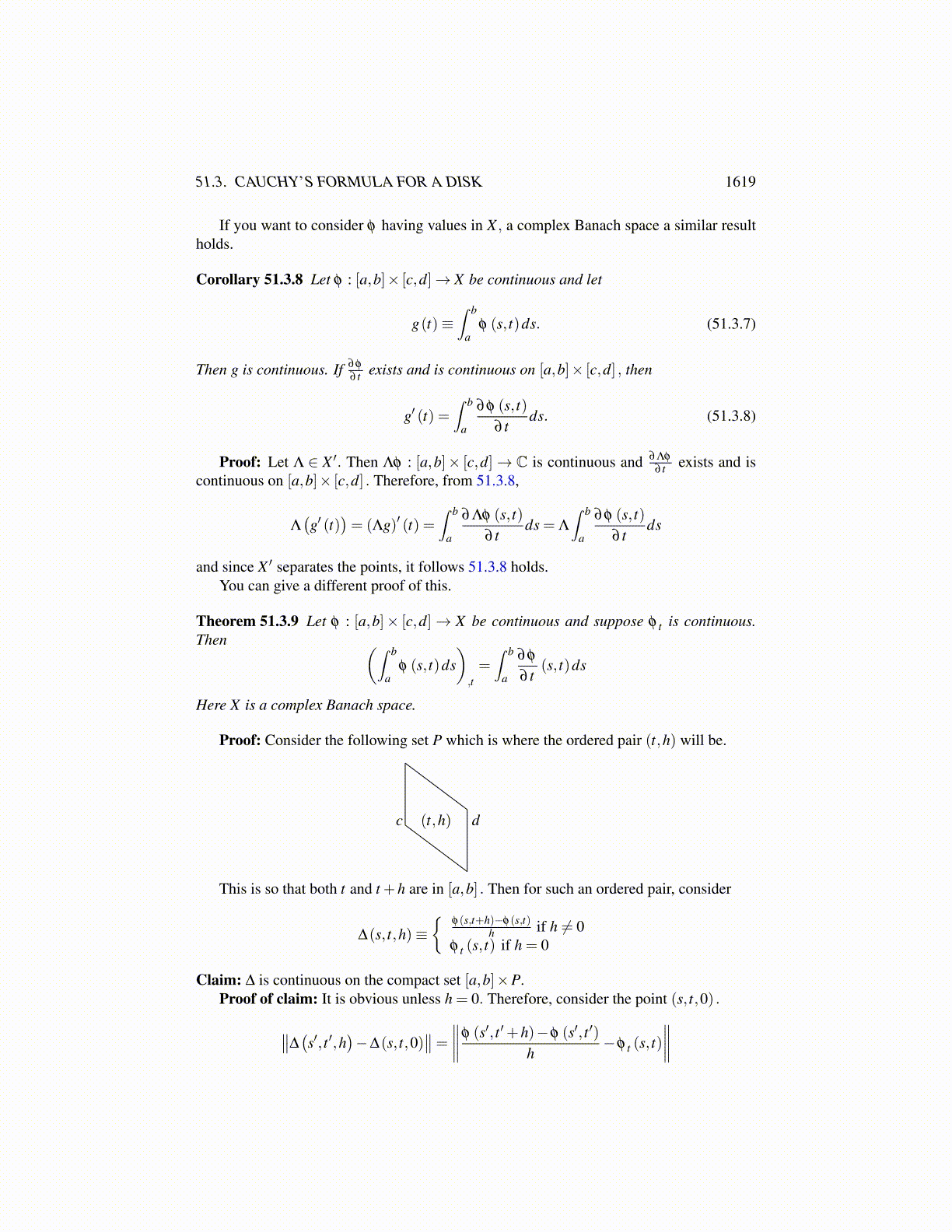
51.3. CAUCHY’S FORMULA FOR A DISK 1619
10. Write the Cauchy Riemann equations in terms of polar coordinates. Recall the polarcoordinates are given by
x = r cosθ , y = r sinθ .
This means, letting u(x,y) = u(r,θ) ,v(x,y) = v(r,θ) , write the Cauchy Riemannequations in terms of r and θ . You should eventually show the Cauchy Riemannequations are equivalent to
∂u∂ r
=1r
∂v∂θ
,∂v∂ r
=−1r
∂u∂θ
11. Show that a real valued analytic function must be constant.
51.3 Cauchy’s Formula For A DiskThe Cauchy integral formula is the most important theorem in complex analysis. It willbe established for a disk in this chapter and later will be generalized to much more generalsituations but the version given here will suffice to prove many interesting theorems neededin the later development of the theory. The following are some advanced calculus results.
Lemma 51.3.1 Let f : [a,b]→ C. Then f ′ (t) exists if and only if Re f ′ (t) and Im f ′ (t)exist. Furthermore,
f ′ (t) = Re f ′ (t)+ i Im f ′ (t) .
Proof: The if part of the equivalence is obvious.Now suppose f ′ (t) exists. Let both t and t +h be contained in [a,b]∣∣∣∣Re f (t +h)−Re f (t)
h−Re
(f ′ (t)
)∣∣∣∣≤ ∣∣∣∣ f (t +h)− f (t)h
− f ′ (t)∣∣∣∣
and this converges to zero as h→ 0. Therefore, Re f ′ (t) =Re( f ′ (t)) . Similarly, Im f ′ (t) =Im( f ′ (t)) .
Lemma 51.3.2 If g : [a,b]→ C and g is continuous on [a,b] and differentiable on (a,b)with g′ (t) = 0, then g(t) is a constant.
Proof: From the above lemma, you can apply the mean value theorem to the real andimaginary parts of g.
Applying the above lemma to the components yields the following lemma.
Lemma 51.3.3 If g : [a,b]→ Cn = X and g is continuous on [a,b] and differentiable on(a,b) with g′ (t) = 0, then g(t) is a constant.
If you want to have X be a complex Banach space, the result is still true.
Lemma 51.3.4 If g : [a,b]→ X and g is continuous on [a,b] and differentiable on (a,b)with g′ (t) = 0, then g(t) is a constant.